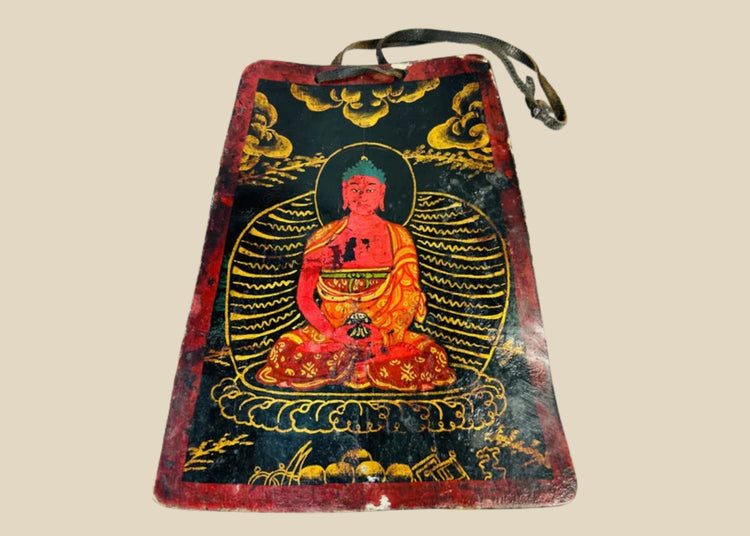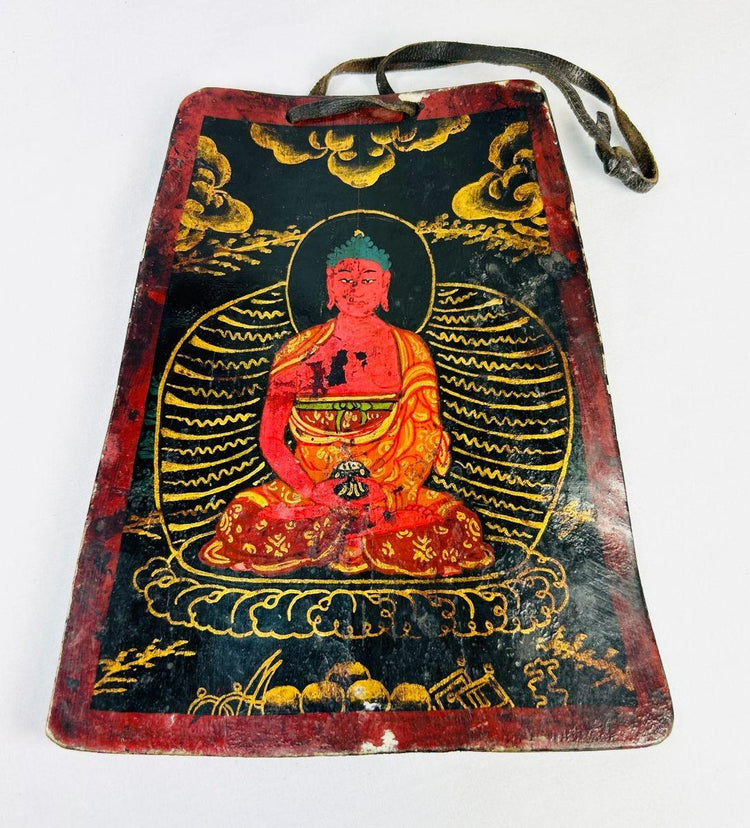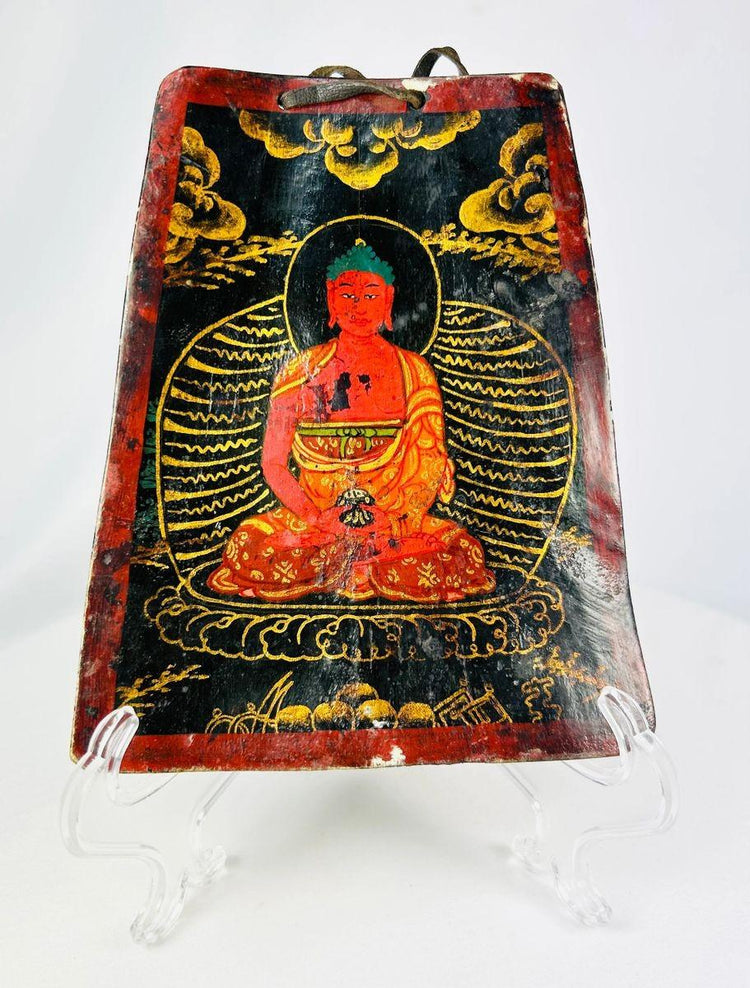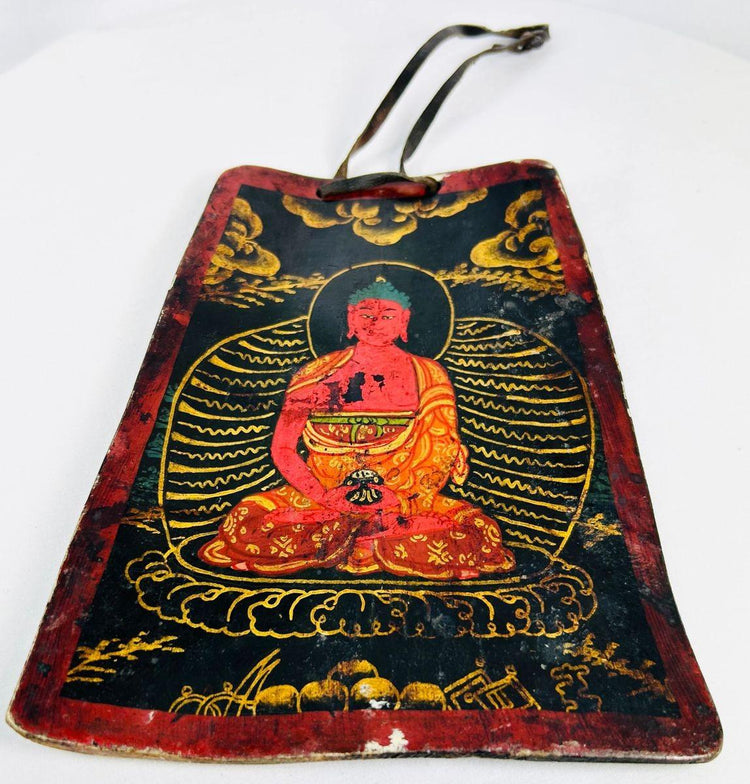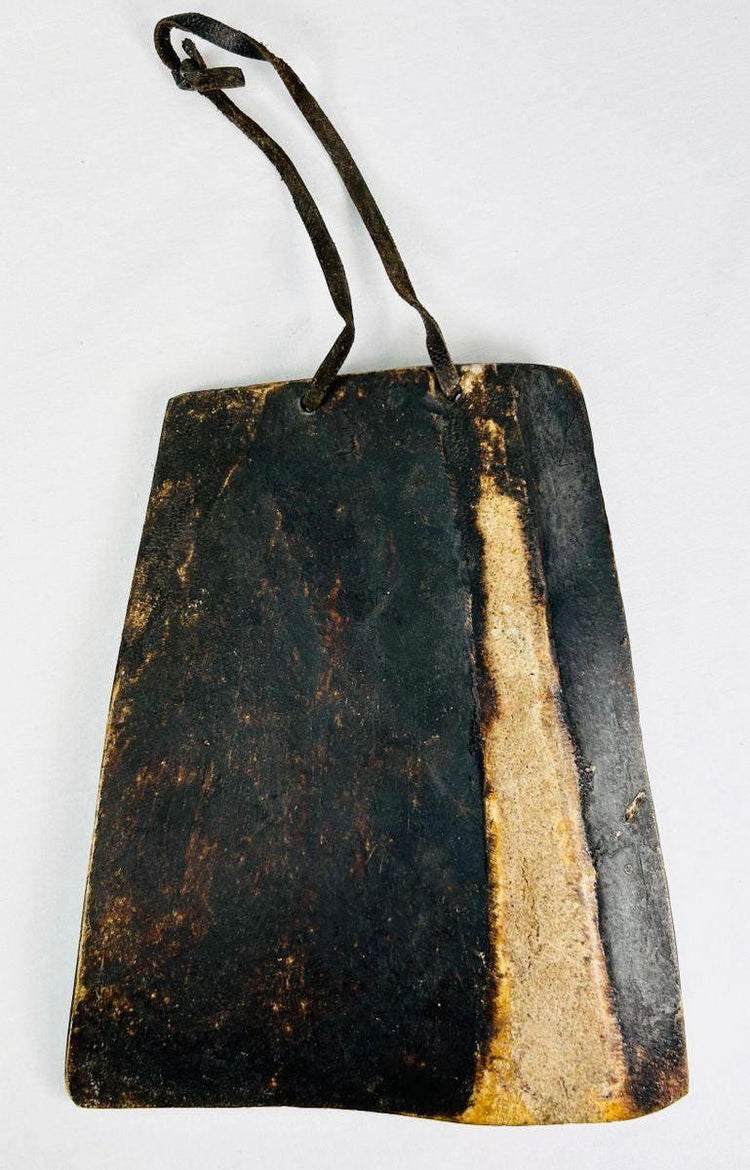Tibetan Devotional Plaque | Hand-Painted Bone Amulet with Buddha on Lotus Throne | Late Qing Dynasty | 19th Century
Description
More
Less
Historical Context & Origin
Region: Tibet
Culture: Tibetan Buddhist
Period: Late Qing Dynasty (19th Century)
Description
This rare Tibetan devotional plaque, crafted in the 19th century, is meticulously hand-painted on natural cow bone and richly adorned with polychrome pigments. The central image depicts the Buddha seated in dhyana mudra (meditative pose) upon a lotus throne, framed by swirling sacred clouds and a stylized mandorla. Executed in bold hues of red, gold, black, and green, the painting reflects the refined artistry of Qing-period Tibetan devotional objects. The reverse side reveals the natural bone surface and retains its original leather strap, underscoring its function as a portable amulet or talisman carried by practitioners for spiritual protection. Its patina, pigment fading, and wear all attest to centuries of ritual handling.
Features
- Hand-painted Buddha seated in dhyana mudra on a lotus throne
- Original pigments in red, gold, green, and black
- Traditional Tibetan Buddhist iconography framed within a mandorla
- Portable amulet form with original leather strap intact
- Natural patina and surface wear consistent with ritual use and age
Cultural Significance
Tibetan Buddhist plaques of this kind were revered as protective talismans, often carried by monks, travelers, or devotees during pilgrimages across the Himalayan region. They were believed to embody blessings of the Buddha, providing both spiritual guidance and protection from harm. The devotional artistry of such portable objects highlights the deeply personal and intimate dimensions of Tibetan Buddhist practice.
Condition
Good antique condition. The surface shows expected wear, with areas of pigment loss, minor abrasions, and age-related patina from devotional use. Structurally stable and well-preserved, retaining its original leather strap.
Dimensions (approximate)
Height: 6.5 in
Width: 5.5 in
Age
Approximately 150–200 years old
Description
Historical Context & Origin
Region: Tibet
Culture: Tibetan Buddhist
Period: Late Qing Dynasty (19th Century)
Description
This rare Tibetan devotional plaque, crafted in the 19th century, is meticulously hand-painted on natural cow bone and richly adorned with polychrome pigments. The central image depicts the Buddha seated in dhyana mudra (meditative pose) upon a lotus throne, framed by swirling sacred clouds and a stylized mandorla. Executed in bold hues of red, gold, black, and green, the painting reflects the refined artistry of Qing-period Tibetan devotional objects. The reverse side reveals the natural bone surface and retains its original leather strap, underscoring its function as a portable amulet or talisman carried by practitioners for spiritual protection. Its patina, pigment fading, and wear all attest to centuries of ritual handling.
Features
- Hand-painted Buddha seated in dhyana mudra on a lotus throne
- Original pigments in red, gold, green, and black
- Traditional Tibetan Buddhist iconography framed within a mandorla
- Portable amulet form with original leather strap intact
- Natural patina and surface wear consistent with ritual use and age
Cultural Significance
Tibetan Buddhist plaques of this kind were revered as protective talismans, often carried by monks, travelers, or devotees during pilgrimages across the Himalayan region. They were believed to embody blessings of the Buddha, providing both spiritual guidance and protection from harm. The devotional artistry of such portable objects highlights the deeply personal and intimate dimensions of Tibetan Buddhist practice.
Condition
Good antique condition. The surface shows expected wear, with areas of pigment loss, minor abrasions, and age-related patina from devotional use. Structurally stable and well-preserved, retaining its original leather strap.
Dimensions (approximate)
Height: 6.5 in
Width: 5.5 in
Age
Approximately 150–200 years old
You May Also Like
















